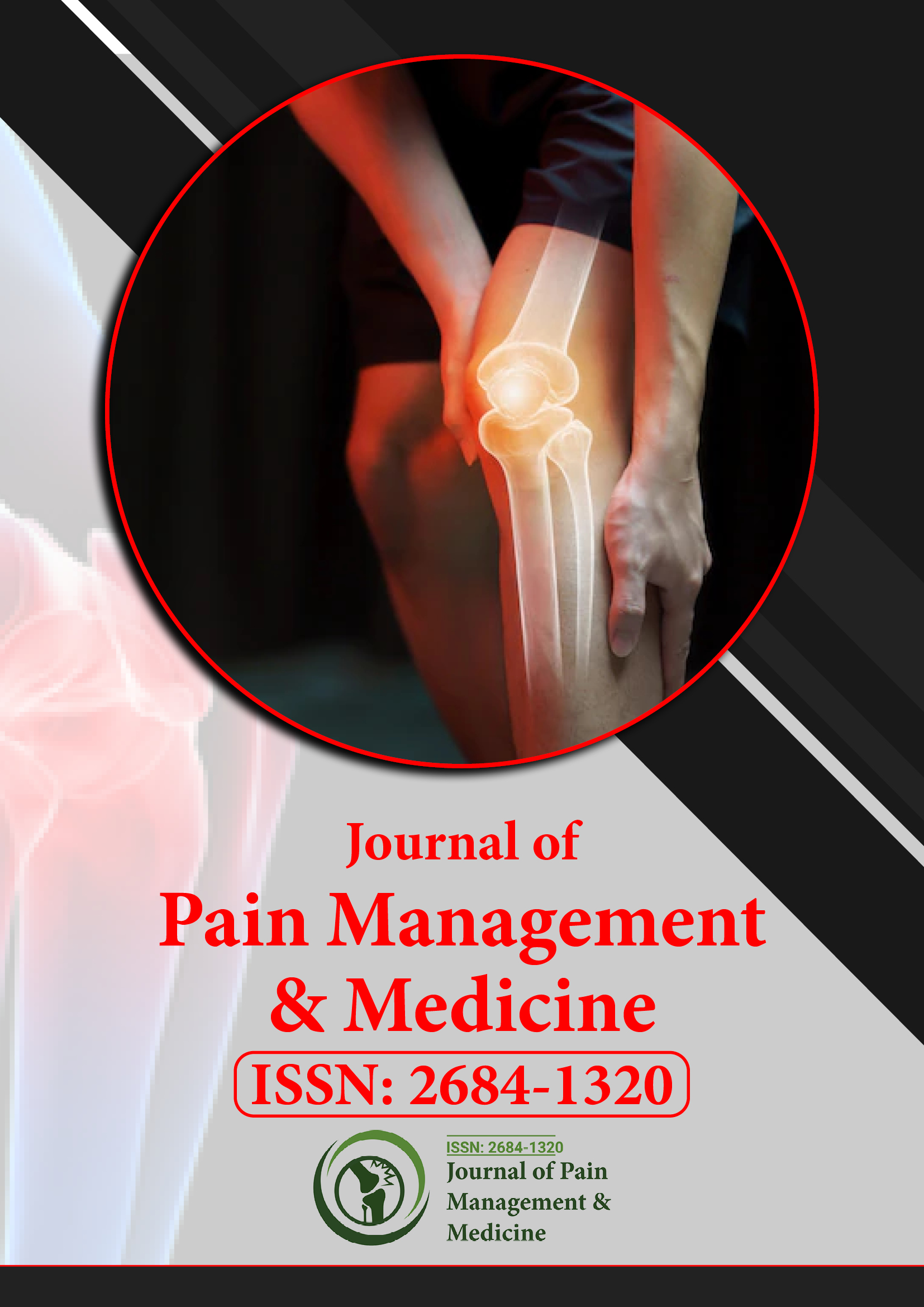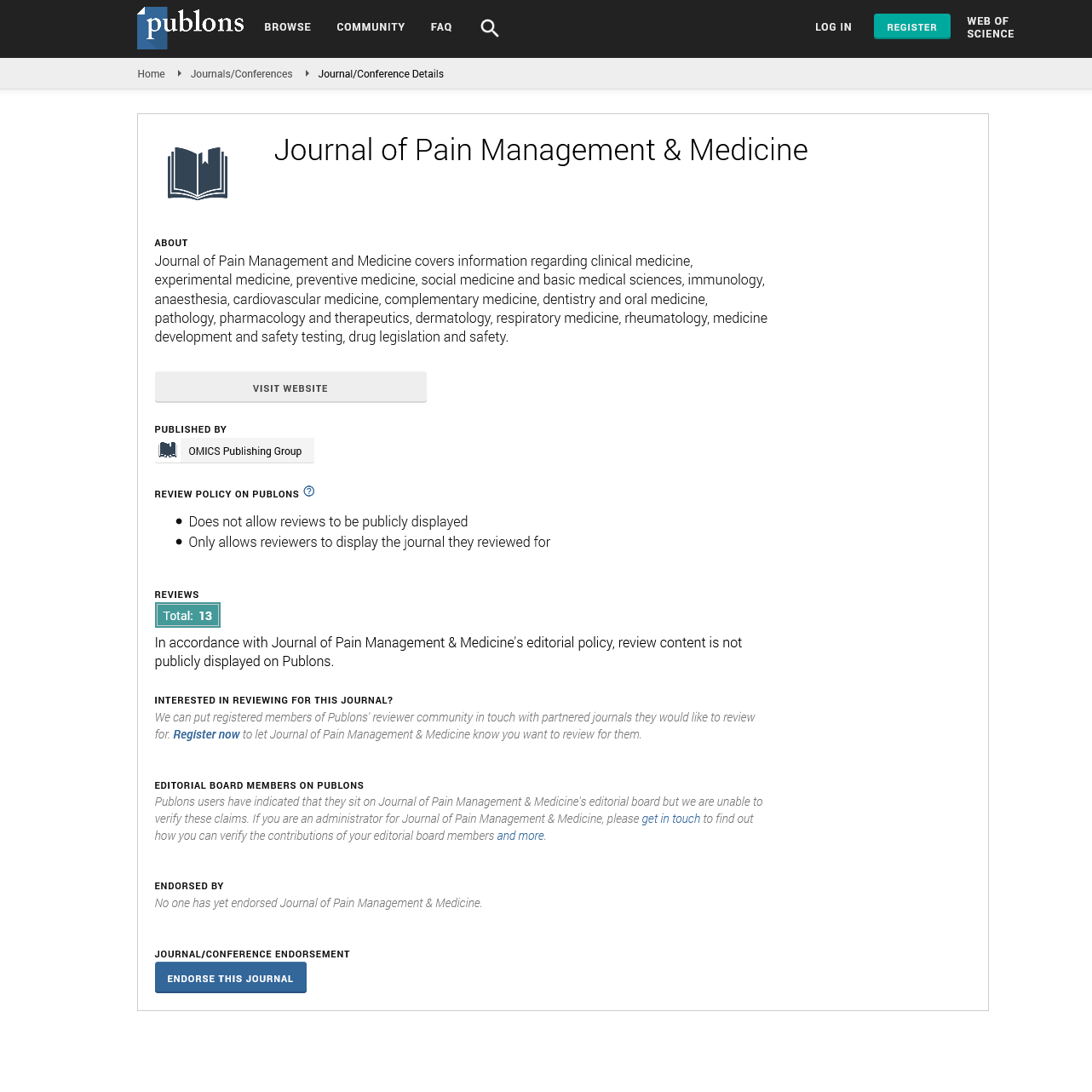Indexed In
- RefSeek
- Hamdard University
- EBSCO A-Z
- Publons
- Euro Pub
- Google Scholar
- Quality Open Access Market
Useful Links
Share This Page
Journal Flyer

Open Access Journals
- Agri and Aquaculture
- Biochemistry
- Bioinformatics & Systems Biology
- Business & Management
- Chemistry
- Clinical Sciences
- Engineering
- Food & Nutrition
- General Science
- Genetics & Molecular Biology
- Immunology & Microbiology
- Medical Sciences
- Neuroscience & Psychology
- Nursing & Health Care
- Pharmaceutical Sciences
Short Communication - (2025) Volume 11, Issue 3
The Optimizing Outcomes in Arthroscopic Shoulder Surgery
Grace Lim*Received: 30-Apr-2025, Manuscript No. JPMME-25-29813; Editor assigned: 02-May-2025, Pre QC No. JPMME-25-29813 (PQ); Reviewed: 16-May-2025, QC No. JPMME-25-29813; Revised: 23-May-2025, Manuscript No. JPMME-25-29813 (R); Published: 30-May-2025, DOI: 10.35248/2684-1320.25.11.326
Description
Arthroscopic shoulder surgery has emerged as one of the most effective minimally invasive techniques for diagnosing and treating various shoulder disorders. With advancements in instrumentation, imaging, and perioperative care, this approach has significantly improved patient outcomes, particularly in terms of pain management, recovery time, and preservation of shoulder function. The procedure is widely utilized for conditions such as rotator cuff tears, labral injuries, shoulder instability, impingement syndromes, and removal of loose bodies within the joint [1].
The shoulder is a complex and highly mobile joint that depends on the coordinated function of muscles, ligaments, and tendons. Injuries or degenerative changes in these structures can lead to chronic pain, stiffness, and functional impairment, significantly affecting quality of life. Traditional open shoulder surgeries, though effective, were often associated with larger incisions, higher risk of complications, prolonged hospital stays, and slower recovery. Arthroscopy, however, has transformed this landscape by offering a less invasive solution with comparable or superior long-term results [2].
During arthroscopic shoulder surgery, small incisions are made around the shoulder to allow insertion of a camera and specialized instruments. The camera projects a magnified view of the joint structures onto a screen, enabling the surgeon to precisely diagnose and repair damaged tissues. This minimally invasive approach reduces trauma to surrounding soft tissues, thereby decreasing postoperative pain and inflammation. In many cases, patients can return home the same day, reflecting the efficiency and safety of the procedure.
Pain management is a critical component of arthroscopic surgery. Advances in perioperative anesthesia, including the use of regional nerve blocks such as interscalene brachial plexus block, have greatly improved immediate postoperative comfort. Furthermore, multimodal analgesic strategies combining nonsteroidal anti-inflammatory drugs, acetaminophen, and limited opioid use help control pain while minimizing side effects. Recent trends emphasize opioid-sparing regimens, given the global concern about opioid dependency and misuse. Enhanced recovery protocols, including cryotherapy and early mobilization, also contribute to effective pain control and functional restoration.
Rehabilitation following arthroscopic surgery is an integral aspect of successful outcomes. Depending on the specific procedure performed, patients usually undergo a structured physiotherapy program to restore range of motion, strengthen surrounding muscles, and prevent stiffness. For example, rotator cuff repairs often require an initial period of immobilization followed by gradual reintroduction of passive and active exercises. On the other hand, procedures such as subacromial decompression may allow earlier mobilization. Collaboration between orthopedic surgeons, pain specialists, and physiotherapists ensures that recovery is tailored to individual needs [3-7].
Despite its many advantages, arthroscopic shoulder surgery is not without challenges. Complications, though rare, may include infection, stiffness, nerve injury, or recurrence of instability. Moreover, patient factors such as age, overall health, and adherence to rehabilitation can influence outcomes. Long-term studies have shown that while arthroscopy provides significant pain relief and functional improvement, optimal results require careful patient selection and comprehensive perioperative management.
In recent years, biologic augmentation has gained attention in arthroscopic procedures. Techniques involving Platelet-Rich Plasma (PRP) and stem cell therapy are being explored to enhance tendon healing and reduce postoperative pain. While evidence remains mixed, these emerging strategies hold promise for further improving surgical outcomes and long-term joint health [8-10].
In conclusion, arthroscopic shoulder surgery represents a major advancement in orthopedic and pain management practice. By combining minimally invasive techniques with modern anesthesia, effective pain control strategies, and structured rehabilitation, patients can achieve substantial relief from chronic shoulder pain and regain functional independence. As research continues to refine surgical techniques and explore biologic innovations, the role of arthroscopy in shoulder disorders is expected to expand further. For clinicians, the focus remains on individualized patient care, ensuring that surgical interventions are not only technically successful but also translate into meaningful improvements in quality of life.
References
- Shaw Sarah E. Short stay EVAR is safe and cost effective. Eur J Vasc Endovasc Surg. 57;3:368-373.
[Crossref] [Google Scholar] [PubMed]
- Gotlib Conn L, Rotstein OD, Greco E. Enhanced recovery after vascular surgery: protocol for a systematic review. Syst Rev. 2012;1;52
[Crossref] [Google Scholar] [PubMed]
- McGinigle KL, Eldrup-Jorgensen J, McCall R, Freeman NL, Pascarella L, Farber MA, et al. A systematic review of enhanced recovery after surgery for vascular operations. J Vasc Surg. 2019;70(2):629-640.e1.
[Crossref] [Google Scholar] [PubMed]
- Brustia P, Renghi A, Aronici M, Gramaglia L, Porta C, Musiani A, et al. Fast-track in abdominal aortic surgery: experience in over 1,000 patients. Ann Vasc Surg. 2015;29(6):1151-9.
[Crossref] [Google Scholar] [PubMed]
- Giacomelli, Elena. A pilot study of the enhanced recovery after surgery protocol in aortic surgery. J Vas Sur. 2021;74:90-96.e2
[Crossref] [Google Scholar] [PubMed]
- Pasin L, Nardelli P, Landoni G. Enhanced recovery after surgery program in elective infrarenal abdominal aortic aneurysm repair. J Cardiovasc Surg. 2019;60:369-374.
[Crossref] [Google Scholar] [PubMed]
- Al-Zuhir N, Wong J, Nammuni I, Curran G, Tang T, Varty K. Selection thirty day outcome and costs for short stay endovascular aortic aneurysm repair (SEVAR). Eur J Vasc Endovasc Surg. 2012;43:662-665.
[Crossref] [Google Scholar] [PubMed]
- Kim M, Brady JE, Li G. Anesthetic technique and acute kidney injury in endovascular abdominal aortic aneurysm repair. J Cardiothorac Vasc Anesth. 2014;28:572-578.
[Crossref] [Google Scholar] [PubMed]
- Lee WA, Brown MP, Nelson PR, Huber TS, Seeger JM. Midterm outcomes of femoral arteries after percutaneous endovascular aortic repair using the Preclose technique. J Vasc Surg. 2008; 47(5):919-923.
[Crossref] [Google Scholar] [PubMed]
- Borner G, Ivancev K, Sonesson B, Lindblad B, Griffin D, Malina M. Percutaneous AAA repair: is it safe? J Endovasc Ther. 2004;11(6):621-626.
[Crossref] [Google Scholar] [PubMed]
Citation: Lim G (2025). The Optimizing Outcomes in Arthroscopic Shoulder Surgery. J Pain Manage Med. 11:326.
Copyright: © 2025 Lim G. This is an open-access article distributed under the terms of the Creative Commons Attribution License, which permits unrestricted use, distribution, and reproduction in any medium, provided the original author and source are credited

